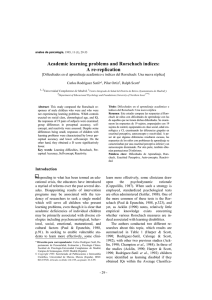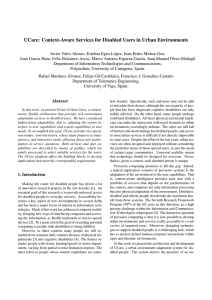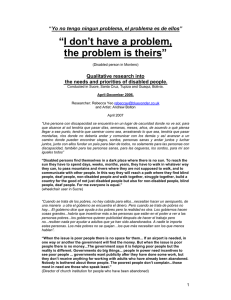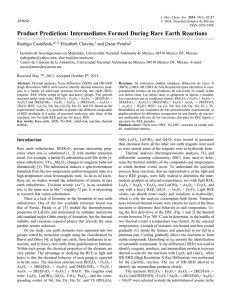IDIOMA EXTRANJERO Y SU DIDÁCTICA−− MOCK EXAM
Anuncio
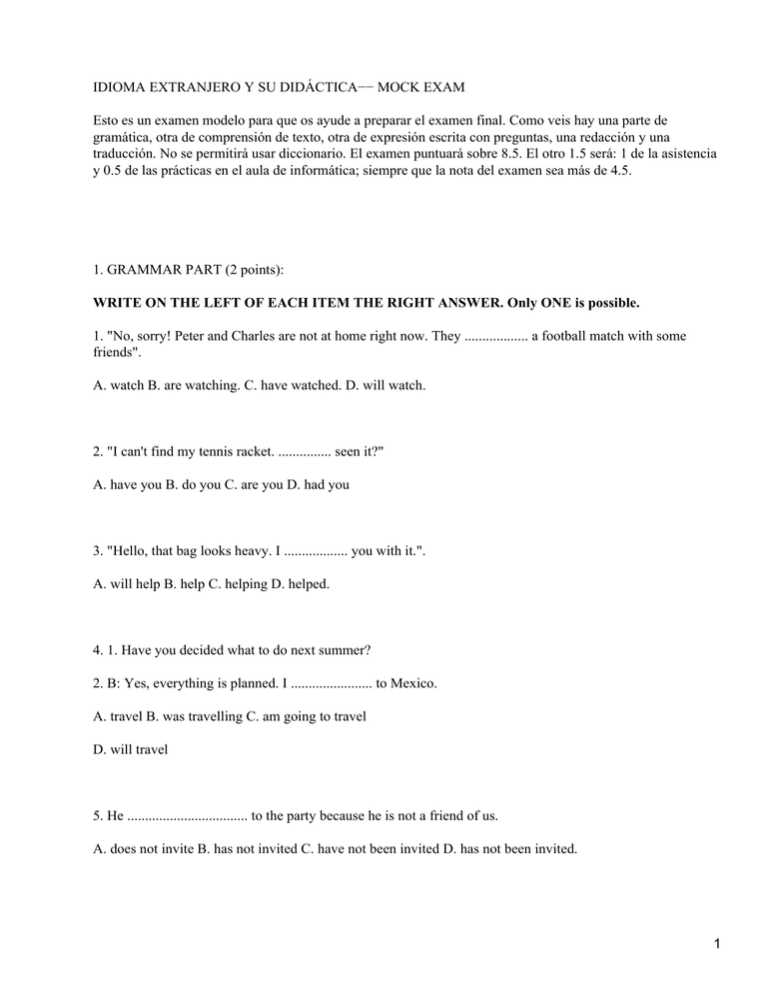
IDIOMA EXTRANJERO Y SU DIDÁCTICA−− MOCK EXAM Esto es un examen modelo para que os ayude a preparar el examen final. Como veis hay una parte de gramática, otra de comprensión de texto, otra de expresión escrita con preguntas, una redacción y una traducción. No se permitirá usar diccionario. El examen puntuará sobre 8.5. El otro 1.5 será: 1 de la asistencia y 0.5 de las prácticas en el aula de informática; siempre que la nota del examen sea más de 4.5. 1. GRAMMAR PART (2 points): WRITE ON THE LEFT OF EACH ITEM THE RIGHT ANSWER. Only ONE is possible. 1. "No, sorry! Peter and Charles are not at home right now. They .................. a football match with some friends". A. watch B. are watching. C. have watched. D. will watch. 2. "I can't find my tennis racket. ............... seen it?" A. have you B. do you C. are you D. had you 3. "Hello, that bag looks heavy. I .................. you with it.". A. will help B. help C. helping D. helped. 4. 1. Have you decided what to do next summer? 2. B: Yes, everything is planned. I ....................... to Mexico. A. travel B. was travelling C. am going to travel D. will travel 5. He .................................. to the party because he is not a friend of us. A. does not invite B. has not invited C. have not been invited D. has not been invited. 1 6. I met Mary yesterday. She said that she ........................... to buy a new car. A. want B. wanted C. will want D. is going to want 7. ................... the loud noise, I was able to hear what they were saying. A. although. B. despite C. despite of D. in spite 8. We went to a very nice hotel ........... celebrate their wedding. A. for B. for to C. to for D. to. 9. I am not going to stop working ............. I finish what I am doing. A. when B. until C. while D. because 10. Whose umbrella is this? This is ............. A. Mary's B. Mary C. of Mary D. from Mary 11. ................................... need painting. A. This house's walls B. This house walls C. This wall's house D. the walls of this house 12. English is much .............. than Japanese. Don't you think so? A. more easy B. easyer C. easier D. more easier 13. The earth, our planet, .................... round the sun. Everybody knows that. A. goes B. go C. is going D. went. 14. While I ......................... dinner, Peter was having a shower. 2 A. cooked B. cook C. was cooking D. were cooking. 15. Although he did not really like Maths, he .............. hard because he wanted to pass his exam. A. studyed B. study C. studies D. studied 16. It rained a lot. ................., our excursion was cancelled. A. although B. therefore C. however D. because 17. 1. How long ........................... in Huelva? 2. For two years. A. have you lived B. do you live C. you live D. you lived 18. They were .................. tired, that they fell asleep after the competition. A. such B. too C. therefore D. so 19. I will show you ............................... It's new. A. my parent's car B. my parents' car C. my parents's car D. the car of my parents. • I .................. running every morning. That keeps me in good shape. A. go B. do C. play D. have 2. READ THIS TEXT: The Dangerous Sports Club is a circle of friends from Los Angeles to Shanghai linking through David Kirke (not to be confused with Kirkee, a town and military cantonment in Poona district, Bombay, India, 18 degrees 33' N. lat, 73 degrees 54'E. long.) in Oxford England. Many people claim to be members when they are not but that only amuses him. There are members of the DSC who do not know each other and prefer it to remain that way. He has all the records of the club. However as people are continually emailing questions about the club I thought it would be a good idea to put up some information on this site. I've included a recent article on the club and excerpts from David Kirke's last two letters to Louis Greig who participated in the early days in France with skis and sleds that ran on blocks of ice. The letters give an account of the recent marriage in 3 France of Hugo Spowers who designed and steered the grand piano down the slopes of St Moritz while Hubert Gibbs played Chopin on it and give some idea of people in the DSC. Click here for the latest nurdorandum from David Kirke and pictures of the 21st Anniversary jump from Clifton Suspension Bridge. Pictures of the first trebuchet human catapult in Netherstowey. Of all the world wide articles in the Press on the DSC this one by Ben Fenton in April of this year gets closest to the spirit of things. The DSC has had over 80 projects in 40 different countries. It was a quintessentially English amateur sports club started by three people which has lived to see its ideas taken up around the world with many people imitating it and sometimes claiming world records which were long ago surpassed by club members who always gave priority to new ideas over making money from ones they had pioneered successfully. In this, as in many other ways, they may be different from other extreme sportsmen you will find on the net. WRITE T (TRUE) OR F (FALSE) ON THE LEFT ACCORDING TO THE TEXT (1.5 points): ____1. El DSC fue fundado por el hindú David Kirke. ____2. Todos los miembros del Club son amigos procedentes de distintas partes del mundo, desde Los Angeles hasta Shanghai. ____3. David Kirke es el fundador pero no participa en los deportes en sí. ____4. Una actividad del Club fue deslizarse con esquís y trineos por bloques de hielo. ____5. Otra actividad fue deslizarse con un piano tocando a Chopin. 3. READ THIS TEXT AND ANSWER THE QUESTIONS IN ENGLISH (1.5 points): Including Disabled Students on Sport & Physical Education Degree Programmes − The Imperative is Consultation Philip Vickerman and Sarah Nixon Centre for Physical Education, Sport and Dance Liverpool John Moores University Introduction Since the shift towards inclusive education following the Warnock Report in 1978, the wider acceptance of more disabled people within mainstream schools has naturally facilitated more opportunities for disabled people to access further and higher education. In 1999, the Centre for Physical Education, Sport and Dance at Liverpool John Moores University introduced a BA (Hons) in Sport Development with Physical Education. One of the primary aims was to attract students from a diverse range of backgrounds. This article discusses some of the issues faced by the course team, and the positive outcomes of including disabled students on courses whether they have learning and/or physical disabilities. 4 Whilst some specific forms of adaptive physical activity that may be appropriate to disabled individuals are offered, it is not the intention to discuss these in any detail. Rather, key principles of facilitating inclusion and the creation of full entitlement to sports courses for disabled people through positive and proactive strategies are considered, as well as the need for open−minded academic and administrative staff, and a desire to want inclusion to work. Context During the last twenty years, legislation has certainly moved towards a more inclusive education system, which recognises individual diversity and responds in proactive ways to create access to mainstream courses. This has particularly come to the fore with the introduction of the Special Education Needs and Disability Act (2001) that states disabled people's rights to access inclusive education. The key point to note is that the critical success factor in facilitating inclusive education comes through positive and open−minded lecturing staff, sound student welfare support services and consultation with the disabled individual. It is not solely about increased costs, or adaptations to buildings and facilities. Whilst in some cases this may be necessary, more often than not, it is about creative thinking of solutions to potential issues of access. The term inclusion needs to be recognised as a concept, that encompasses philosophy, process and practice, and as such needs thorough consideration prior to delivery. Thus departments need to appreciate general principles of inclusive physical activity, but then move on to the development of systematic strategies that work proactively to enable disabled students to access sports courses. 1) Summarize the introduction in no more than three lines. 2) According to the text, why do you think that disabled students are having more rights? 3) According to the text, do the authors criticize that teaching sports to disabled students are only for rich students in private schools? 4) Explain with your own words the term inclusion needs to be recognised as a concept, that encompasses philosophy, process and practice. 4. IMAGINE YOU ARE A TRAINER OF A FOOTBALL TEAM AND YOU WANT TO DEVELOP IN YOUR STUDENTS A SENSE OF RELAXATION AND CONCENTRATION BEFORE A COMPETITION. WRITE IN 150 words IDEAS AND PIECES OF ADVICE YOU WOULD TELL THEM (2 points): 5. TRANSLATE THIS TEXT INTO SPANISH (1.5 points): TPR is based on the premise that the human brain has a biological program for acquiring any natural language on earth − including the sign language of the deaf. The process is visible when we observe how infants internalize their first language. The secret is a unique "conversation" between the parent and infant. For example, the first conversation is a 5 parent saying, "Look at daddy. Look at daddy." The infant's face turns in the direction of the voice and daddy exclaims, "She's looking at me! She's looking at me!" 6

